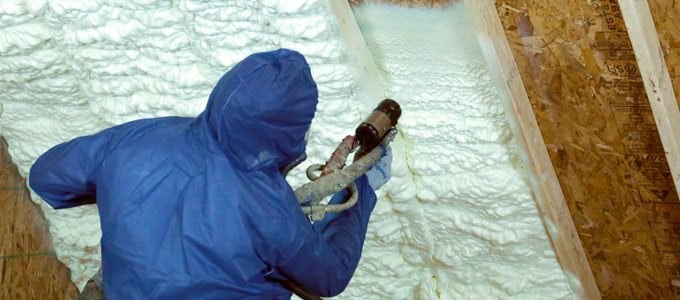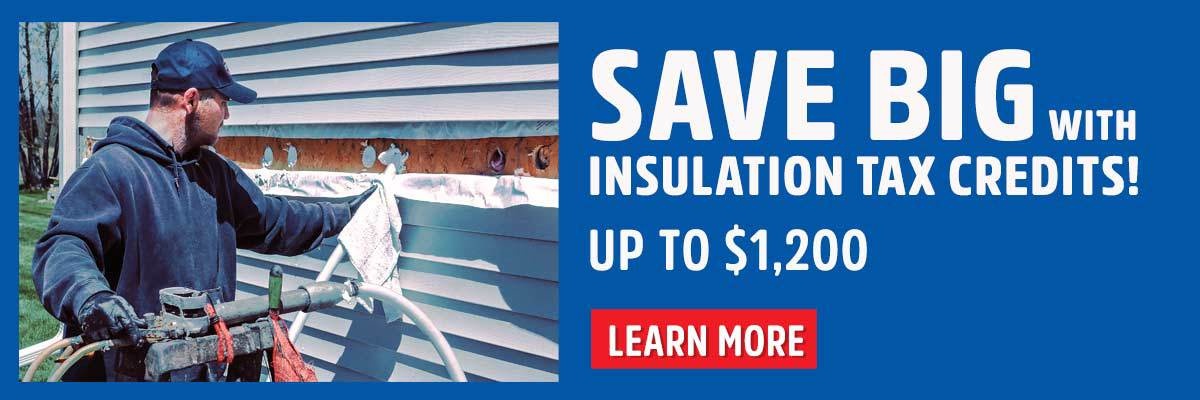How Much Does Spray Foam Insulation Cost in the Attic of an Existing Home in 2024? (Prices/Rates/Factors)


Is snow melting on your roof before any of your neighbors’? Are ice dams forming on the edge of your roof? Do you find it hard to regulate the temperature of your home?
If you answered yes to these questions, using spray foam insulation in your attic could help fix the problem.
These are just some of the key signs that you need to insulate or reinsulate the attic of your home. Other symptoms include high energy bills, upstairs rooms not maintaining the same temperature as the rest of the house, and issues with your roof.
After insulating thousands of attics in Michigan over the past 20 years, we know insulating your attic with spray foam can cure what ails you when it comes to saving money and keeping you comfortable. RetroFoam of Michigan uses spray foam insulation when insulating attics, crawl spaces, and rim joists.
We are on a mission to educate homeowners looking for information on foam insulation, including how much their project will cost.
As part of our mission, in this article, we'll discuss the attic spray foam insulation cost and everything included with that price.
Attic Spray Foam Insulation Cost
The size of the treated area in the attic to be sprayed is the most significant contributor to the spray foam project cost.
The bigger the space, the more expensive the job will be.
For example, if you decide to insulate the attic's roof deck, that will be a larger area to cover compared to the floor. This can increase the cost of the project.
The total projected average cost to spray foam an attic in an existing home ranges between $5,000 to $10,000.
What Variables Determine the Cost to Spray Foam an Attic?
The type of material used is also a determining factor. On the majority of our projects, we usually use about six inches of open cell spray foam.
If an attic is sprayed with closed cell insulation, the cost of the project will be more expensive.
The thickness of the foam sprayed is also a factor. The standard amount sprayed is 6- to 10-inches for open cell, depending on where you live, but if more is needed, it will also affect the price.
How to Tell if Your Attic Needs Insulation
Here are some of the signs you may need new insulation in the attic:
- Snow melting on your roof. If the snow on your roof is melting before the snow on your garage, heat could be escaping from your roof and melting the snow.
- Ice dams form on the edges of your roof. Ice damming can mean poor insulation or poor ventilation. If the ventilation isn’t right, then there is a possibility that you have a traditional attic system with insulation on the floor of the attic and venting that runs up the roof deck. Even with proper ventilation, you can still get ice damming if there is heat escaping.
- High energy bills. Your energy bills may be through the roof if your furnace or air conditioner is running constantly due to poor insulation.
- The upstairs rooms don’t stay warm during the winter. A common complaint is that the rooms on the second floor don’t stay warm despite the furnace continuing to run.
- You replace your roof more often than normal. It isn’t normal to replace your roof every 10 to 12 years. The average lifespan of a roof is between 30 and 40 years. If you frequently replace your roof, you could have a moisture problem stemming from poor insulation.
What Does the Install of Spray Foam Attic Insulation Entail?
 After you receive your quote and are prepared for the project to begin, the first part of the project will start when a crew comes to your home to remove the old insulation in the attic.
After you receive your quote and are prepared for the project to begin, the first part of the project will start when a crew comes to your home to remove the old insulation in the attic.
The older insulation must be removed for the spray foam to work effectively.
The crew will go into the attic and, lay down plastic, and use a vacuum system to remove the old insulation. The crew then takes the old insulation away to make sure it is disposed of properly.
The next day of the project, a crew will come to your home and run a hose up to the work area in the attic. The majority of the second day is spent spraying the foam onto the roof deck or attic floor, depending on the job. A thin layer of foam is also sprayed on the studs of the roof to stop thermal bridging.
Thermal bridging, also called a cold bridge or heat bridge, is an area of a building that has a significantly higher heat transfer than the surrounding materials, resulting in an overall reduction in thermal insulation of the building.
Thermal bridging is most commonly found on the studs of exterior walls, attics, and roof structures.
Once everything has been sprayed, the crew cleans up the area to look just like it did before the project started.
Which is More Efficient – Insulating the Floor or Roof Deck of the Attic?
The question we get the most is whether the homeowner should insulate the floor or roof deck with spray foam.
We recommend insulating the roof deck with spray foam because we prefer the unvented system. It’s more efficient and safer, we feel, in the long term.
The type of attic system you want is ultimately decided by what you want to do with the space. For people who feel like they need that extra storage or don’t want to risk moisture buildup, the unvented system is the way to go.
A higher-pitched roof lends itself to a vented system and will still reduce air leakage in the home.
Let's dive a little deeper into what both of these techniques have to offer.
The first step to the proper insulation of spray foam in an attic is to seal off the building envelope by insulating the top of the house.
The best insulation system for an attic is to spray open cell foam on the attic's roof deck. There are several reasons why this is more efficient:
- It stops all air and moisture from coming in through the roof.
- It protects your roof.
- It will make your attic the same temperature as the rest of the house, so the furnace doesn’t have to work as hard to maintain a constant temperature.
- Heating the attic for homes in Michigan with steeper roofs can help the airflow in your home. Think of a lava lamp and the way the wax rises to the top when it is warm and sinks back to the bottom as it cools down. Air moves the same way as it heats up and cools down.
Another proper insulation solution for the attic would be to have spray foam insulation on the floor, much like a traditional system. The drawback to this system is you would also need attic venting with baffles in your soffit. This will allow airflow into the soffit. You would also need ridge vents running along the roof deck to circulate airflow.
This method is not usually recommended by good contractors because the ventilation must be kept up. The insulation must be properly placed and aligned, and it can’t be obstructed. The entire system is contingent on the airflow getting in and then getting out.
How Much Money is Saved By Insulating the Attic?
You can definitely save money by insulating your attic with spray foam, but the amount can vary depending on what you have going on in your home.
Straight out of the gate, if your attic is the sole cause of your high energy bills, then the addition of spray foam in the attic could save you anywhere between 15 to 50 percent. If you have other underlying issues with insulation in the rest of your home, you won't see the same savings.
Here are a few other things that can affect your monthly energy bill savings.
Do you have a high-efficiency furnace or AC unit? If you answered no, then your energy savings could be adversely affected because your dinosaur of an HVAC system is eating up all your energy usage.
What do you set your thermostat at? Do you change the settings when you're not going to be home or when you go to sleep? Just these little adjustments can help reduce your energy bills.
If you have insulation in the other areas of your home, then that can lead to air leakage in other areas, which in turn will lead to high monthly energy bills. We discuss this more below.
What Services Are Included When Insulating an Attic?
The best insulation companies should offer services that start with the call for an estimate and end with living in a more comfortable home.
Some of the services that should be included are:
- A free estimate for the project.
- Free concierge program, so someone stays with you throughout the entire project to answer any questions you may have.
- Help with applying for financing for the project.
- Cleaning out old insulation from the attic and disposing of it properly.
- Clean up after the project is complete so your home looks just as it did before the project was started.
- Applying for rebates, you get money back on your project.
- A lifetime warranty that is connected to the house.
Added Protection Against Drafts and High Energy Bills
Sometimes, cold air moving through a crawl space or attic can contribute to the discomfort you are feeling in your home, but sometimes, there is more to the discomfort you are feeling.
Insulating your entire home using injection foam and spray foam can make a difference year-round, keeping you cool in the summer and warm in the winter and saving you money on your energy bills.
Fees and Taxes in Addition to the Attic Foam Insulation Cost
A good contractor won’t hit you with hidden fees and costs once the job is complete.
The estimate you sign and agree to should be the project's final cost.
Discovering Savings: Michigan Home Insulation Rebates and Tax Credits
Michigan homeowners have an exciting opportunity to save on their energy bills by choosing foam insulation for their homes.
This program is part of a broader initiative to promote energy efficiency, and RetroFoam of Michigan is at the forefront, helping homeowners maximize their rebates. It's essential to grasp the distinction between rebates and tax credits.
Rebate Rewards: Unlocking Cash Incentives
If you're considering insulating a single area of your home, you can benefit from the standard mail-in insulation rebate.
Depending on your project's size, these rebates range from $50 to $250. Utility providers like Consumers Energy, DTE, SEMCO, and Michigan Gas and Utilities offer these rebates directly.
Additionally, homeowners who insulate at least two areas of their homes can take advantage of the home performance rebate, ranging from $400 to $1,100.
Tax Credits: The Financial Advantage
Under the Inflation Reduction Act, a policy for energy-efficient home improvements, homeowners can claim up to $1,200 in tax credits annually for individual insulation or other energy-efficient upgrades until 2032.
For those interested in home energy audits, there's an extra credit of up to $150. To claim this tax credit, homeowners need to complete IRS Form 5695 and include a copy of their contract with RetroFoam of Michigan.
Eligibility and Assistance: Navigating the Requirements
It's crucial to understand that eligibility for these rebates and tax credits requires consultation with your energy provider and a tax professional to ensure that your project qualifies.
RetroFoam of Michigan can be a valuable resource in this process. They we up-to-date with current energy efficiency tax credits and insulation rebate amounts and help our customers understand these benefits.
Leveraging these home insulation rebates and home improvement tax credits can significantly offset the cost of foam insulation for homes in 2024, reinforcing the financial advantages of this decision.
Getting Started with a Free Estimate
When you are ready to schedule a free in-home estimate, give us a call at 866-900-3626 or fill out the form on our website.
You can also check out our budget calculator to give you a rough idea of the cost of your project.
If you'd prefer to continue your research on the benefits of foam insulation for your home, our Learning Center is filled with great resources to check out.
Related Articles
Spray Foam Attic Floor or Rafters: Which is Best to Insulate?
What is the Best Insulation for an Attic? (Spray Foam vs Fiberglass vs Cellulose)
Open Cell or Closed Cell Spray Foam: Which is Best for the Attic and Roof?
Save
About Amanda Ringler
Amanda previously has worked as a breaking news and crime reporter, TV news producer, and editor in Flint and Detroit. Throughout her career as a journalist, she has won several awards from The Society of Professional Journalists - Detroit Chapter and the Michigan Press Association. As part of the RetroFoam of Michigan family, Amanda uses her experience as a journalist to write content that will help educate homeowners on the benefits of foam insulation. When Amanda isn’t writing, she’s spending time with her husband and rescued huskies. She also loves knitting, making art, cooking, and hosting dinner and a movie night for friends and family.

.jpg)
